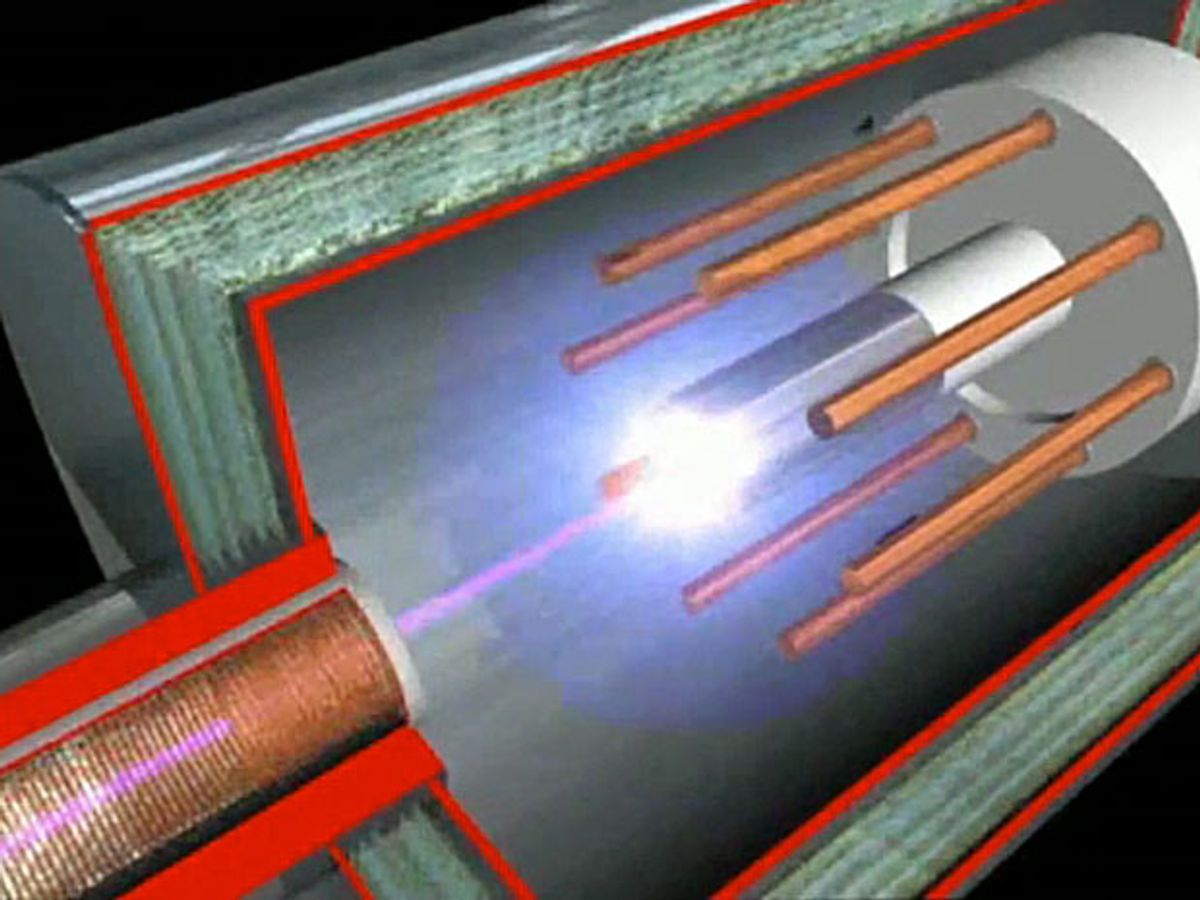The inventors of a new, proprietary approach to purportedly low-cost nuclear fusion wrapped a largely successful crowd-funding campaign on 5 July. The campaign, which raised $180,279 of its $200,000 goal, will fund a next-generation experimental reactor with the aim of achieving a working device by 2020.
The so-called “Focus Fusion” device harnesses the alternate proton-boron nuclear fusion reaction—one that generates comparatively fewer neutrons than traditional multi-billion-dollar deuterium-tritium reactors. There are at least two other companies, in addition to the “Z-machine” at Sandia National Laboratory, pursuing similar avenues to the ultimate goal everyone in fusion research seeks: sustained, clean, and radiation-free fusion reactions that produce more energy than they consume.
It’s an extremely tall order. But Lawrenceville Plasma Physics (LPP), helmed by Eric Lerner, has now aggregated the contributions of 2,211 donors (plus an undisclosed number of bitcoin contributors) to underwrite what he’s proclaiming as the inroad to cheap, sustainable nuclear fusion power by the end of the decade.
LPP’s IndieGogo moonshot campaign wrapped on 5 July—the day after the closing of a similarly ambitious (though unaffiliated) moonshot crowd-funding campaign that hopes to completely rewrite the rules of campaign financing in the United States.
Last year, LPP commissioned a scientific review panel to assess both the physics and the engineering behind their Focus Fusion device. The panel’s report formed a substantial part of the organization’s pitch to its potential base of crowd-funders.
Robert Hirsch, who, from 1972 through 1976, directed fusion research for the U.S. Atomic Energy Commission and Energy Research and Development Administration, chaired the review panel. Hirsch says his panel was allowed full access to LPP’s equipment and labs as well as their proprietary process for harnessing proton-boron fusion.
Hirsch says he was impressed by the “innovative thinking” behind the Focus Fusion device. Proton-boron fusion had been considered in fusion’s early days, as far back as the 1950s. But he says this pathway to fusion was abandoned in part because of the high temperatures required to sustain the reactions.
“One of the big questions you’d want to ask is: Why are these guys doing this thing after this thing had been pursued decades ago?” says Hirsch. “The reason is they brought in some physics that people hadn’t thought to apply to this particular case—but may apply. And it was very clever. And they found their way conceptually around the limitations as we knew them.”
Hirsch says he cannot, however, disclose any more details about the new physics that “Focus Fusion” builds on.
In any event, he says, the biggest question is: Will this thing work? And on that score, he thinks the answer may be available within a few years.
Margo Anderson is senior associate editor and telecommunications editor at IEEE Spectrum. She has a bachelor’s degree in physics and a master’s degree in astrophysics.




